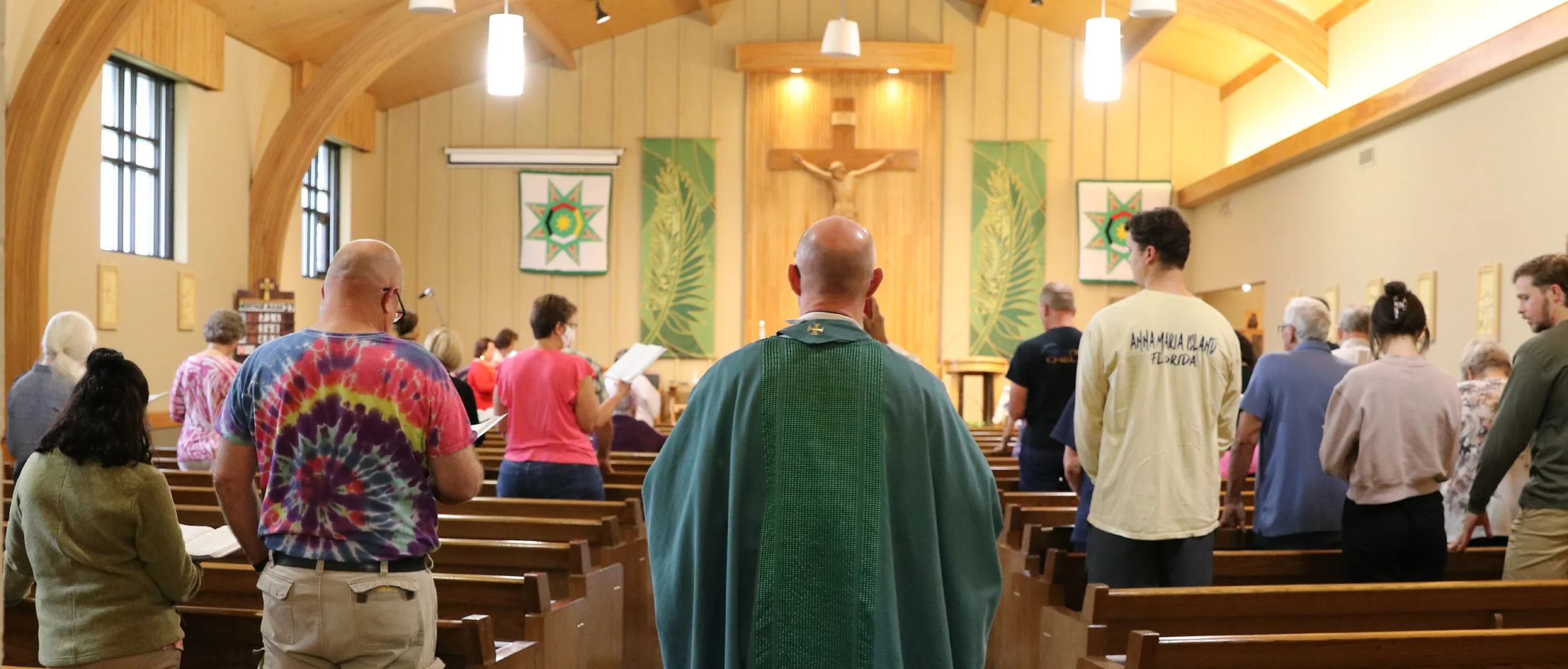
By Patricia McGeever
In Rapid City, S.D., St. Isaac Jogues parish serves the local Native American population, but also welcomes vacationers visiting the nearby Black Hills National Forest and Custer State Park.
“The flood came and wiped it all out,” Little Bear says. The parish’s pastor, Fr. Francis J. Collins, SJ, lost his life, but another Jesuit, Fr. Lawrence E. Edwards, survived despite being swept away in the current.
At a small parish on a hill in Rapid City, South Dakota, you’ll find a place of service, spirituality and survival. St. Isaac Jogues parish was founded to help Native Americans adjust to city life after World War II. Appropriately, it’s named for a French Jesuit who ministered to Native people in New York in the 17th century. But before there was a church, locals gathered at the Mother Butler Center.
“When I was growing up it was really, really family oriented,” says parishioner Germaine Little Bear. “There were a lot of events, the children all came.”
The Mother Butler Center hosted basketball and boxing tournaments, and at least once, there was a bazaar.
The Mother Butler Center opened in 1950. It was named for Mother Joseph Butler, the founder of Marymount College in New York, after Diocese of Rapid City Bishop William McCarty received a donation in her honor. Two Jesuits served as staff, taking up residences on the second floor of the building, which also included meeting space, a gym, a health clinic and a chapel.
Several years later, an old wooden chapel salvaged from nearby Ellsworth Air Force Base was moved next to the Mother Butler Center, becoming the first home for St. Isaac Jogues Parish. For years, the parish was the center of activity for Native Americans in the community. Then, tragedy struck in 1972.
It’s been more than 50 years since the catastrophic Black Hills Flood took the lives of 200 people and injured thousands. The church and Mother Butler Center were among the buildings destroyed.
But the parish family would rebuild. As the process began, the diocese reached a deal with local Lutheran officials, who were selling property that included a church and residence. Two years later, a new Mother Butler Center stood on the site as well.
Today, St. Isaac Jogues remains committed to its mission of serving the Native American population of greater Rapid City. But the parish is made up of people from all backgrounds and walks of life.
“We are welcoming to people of any race,” says parishioner Maria Ramos. For some, St. Isaac Jogues is a destination. It also happens to be in a convenient location, near the intersection of two major highways, and when people vacationing in the Black Hills search for a Catholic church, they find St. Isaac Jogues. Ramos says, “A lot of times we have visitors from all over for Mass.”
Patricia McGeever is an award-winning freelance writer and television news producer based in Cincinnati. A proud Xavier Musketeer, she is a retired Irish dancer and instructor.
Every Sunday, the 11 a.m. Mass is inculturated, and the Azilya ritual, an incensing prayer led by Lakota men and women asking God to cleanse, purify and bless, is performed. While the Lakota Four Directions song is sung, a Native person passes by with burning sage. The sacred smoke is fanned over the congregation using an eagle feather. It’s a cleansing ritual that also gives honor and glory to God.
Another way the parish reflects its population is in the design of the church. “We have a round altar,” says Fr. Ed Witt, SJ, pastor of St. Isaac Jogues. “The circle is key for Native people. We also have Native designs in our vestments.”
Currently, the congregation joins other parishes in the region to pray for the canonization of Nicholas Black Elk, a medicine man from the nearby Pine Ridge Indian Reservation who converted to Catholicism. Black Elk was appointed a catechist by the Jesuits in 1907. Much like the Native parishioners of St. Isaac Jogues, Black Elk was devoted both to his Lakota traditions and his Catholic faith.



